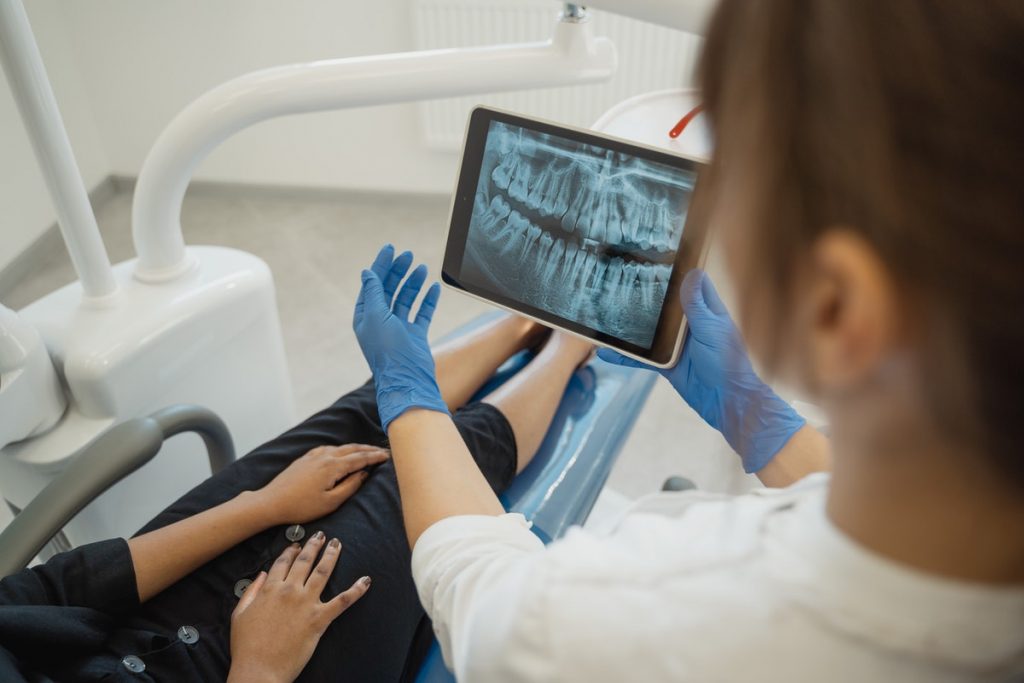You probably already know that you should brush your teeth every day, but did you know that there are other things you can do to maintain your pearly whites? This blog post will teach you some of the best practices for keeping your teeth healthy.
Learn How to Brush Your Teeth Properly
Just because you’ve been brushing your teeth for years doesn’t mean you’re doing it correctly. Remember that brushing your teeth includes using a soft-bristled toothbrush, choosing the right toothpaste, and brushing for two minutes at least twice daily.
To do this right, start by wetting your toothbrush before putting toothpaste on it. Otherwise, the toothpaste may just slide off. Then, use gentle circular motions. Be sure to focus on all sides of your teeth, including the front, back, and top surfaces.
You should also avoid scrubbing too hard, as this can damage your gums. And don’t forget about the tongue! Use gentle back-and-forth strokes on the top of your tongue to eliminate bacteria.
Then, spit the toothpaste out after brushing. Rinse your mouth and toothbrush with water. Finally, store your toothbrush in an upright position so it can air-dry. Replace your toothbrush every 3-4 months or sooner if the bristles are frayed.
Learn How to Floss Properly
Do you know how to floss your teeth properly? Many people think that simply running the floss between their teeth is enough, but there’s a little more to it than that.
The first step is to choose the right type of floss for you. There are many different types of floss on the market, so it’s important to find one that you’re comfortable using. If you have sensitive gums, for example, you might want to use waxed floss so that it slides more easily between your teeth without irritating your gums.
Once you’ve selected your floss, wind it around your middle fingers, leaving about two inches of slack in between. Then, grip the floss tightly and guide it gently down between two of your teeth until you feel resistance. Gently bend the floss around the tooth and use an up-and-down motion to clean the sides. Be sure to go beneath the gumline as well!
Repeat this process for each tooth, using a new section of floss as necessary. Finally, once you’re done flossing your teeth, rinse your mouth with water or mouthwash to remove any leftover debris. Do this at least one to two times a day.

Visit Your Dentist Regularly
It is recommended that most people see their dentist at least once a year for a professional cleaning and check-up. However, some people may need to go more often depending on their needs. For example, people with diabetes or gum disease may need to visit more frequently.
There are a few key reasons why it’s important to see your dentist regularly. First, your dentist can spot problems early on before they become more serious. For example, cavities can be caught early and treated before they become larger and more expensive to fix.
Second, a visit is a chance to professionally clean your teeth. This gets rid of plaque and tartar that can lead to tooth decay or gum disease. Finally, visiting the dentist is a good way to ensure you’re doing everything possible to care for your teeth properly.
Have Missing Teeth Replaced
Did you know that your teeth also play an important role in protecting the rest of your mouth? They help to keep the jawbone strong and healthy and also help to stimulate the gum tissue. So, when you lose a tooth, it can have a serious impact on the health of your remaining teeth.
Missing teeth can cause your other teeth to shift out of place. That’s because there is nothing to hold them in place anymore. Additionally, losing a tooth can cause your jawbone to weaken. This is because the roots of your teeth help to stimulate the jawbone, and when you lose a tooth, that stimulation stops. Consequently, losing a tooth can cause your jawbone to deteriorate over time.
The best way to prevent damage to your other teeth after losing one is to get an all-on-4 dental implant. Dental implants are artificial roots placed into your jawbone to hold your new tooth in place. Additionally, these help to stimulate the jawbone, which prevents it from weakening over time. If you’re considering getting implants, consult a qualified implant dentist who can evaluate whether or not you’re a good candidate for this procedure.
By following these simple tips, you can keep your teeth healthy and strong for years to come! Just remember to brush properly, floss daily, have missing teeth replaced, and visit your dentist regularly for cleanings and exams.


